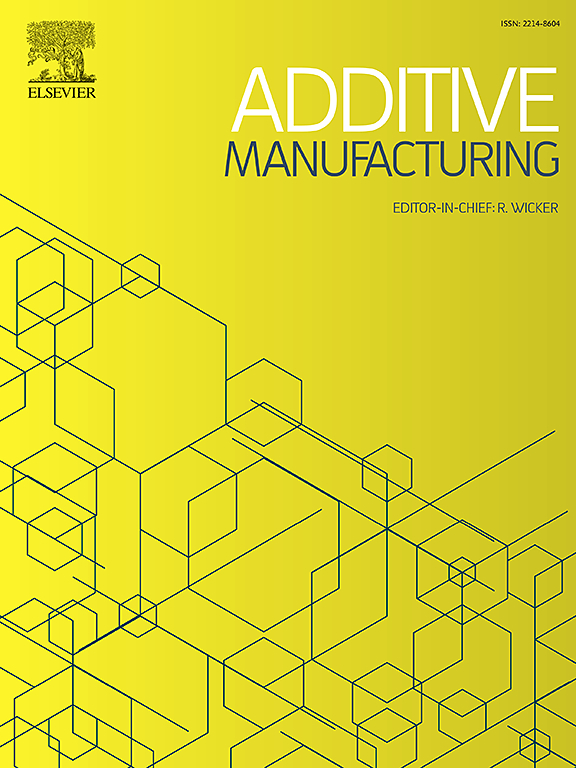Quantifying residual orientation and thermal stress contributions to birefringence in the material extrusion of polylactide
IF 10.3
1区 工程技术
Q1 ENGINEERING, MANUFACTURING
引用次数: 0
Abstract
Material extrusion is a common additive manufacturing process that subjects polymers to non-steady deformation and thermal processing to build a customized part. The mechanical properties of these parts are often worse than those of injection-molded specimens due to failures at or near the weld zone between extrudate layers. Chain orientation is often cited as a contribution to mechanical weakness at the weld, and it is therefore of critical importance to develop strategies to quantify the magnitude and location of residual chain orientation as a function of printing conditions. Here we use birefringence imaging to characterize the spatial variation in residual stress and residual chain orientation in a glassy polylactide. A combination of retardance measurements and sample thickness measurements provide a measure of birefringence as a function of position. As-printed samples show a nearly uniform birefringence background of approximately and higher birefringence near the weld region at lower nozzle temperatures and faster printing speeds. We propose two origins to the birefringence: one due to residual chain orientation, and the other due to residual stresses that occur when the sample cools non-uniformly on the build plate. Annealing the sample at 65 °C (slightly above the glass transition temperature) allows us to relax the residual stress without removing the orientation-based birefringence or crystallizing the sample. The residual orientation shows a strong power-law dependence on the Weissenberg number based on the characteristic timescales for flow in the nozzle and polymer chain reptation.
求助全文
约1分钟内获得全文
求助全文
来源期刊

Additive manufacturing
Materials Science-General Materials Science
CiteScore
19.80
自引率
12.70%
发文量
648
审稿时长
35 days
期刊介绍:
Additive Manufacturing stands as a peer-reviewed journal dedicated to delivering high-quality research papers and reviews in the field of additive manufacturing, serving both academia and industry leaders. The journal's objective is to recognize the innovative essence of additive manufacturing and its diverse applications, providing a comprehensive overview of current developments and future prospects.
The transformative potential of additive manufacturing technologies in product design and manufacturing is poised to disrupt traditional approaches. In response to this paradigm shift, a distinctive and comprehensive publication outlet was essential. Additive Manufacturing fulfills this need, offering a platform for engineers, materials scientists, and practitioners across academia and various industries to document and share innovations in these evolving technologies.
 求助内容:
求助内容: 应助结果提醒方式:
应助结果提醒方式:


